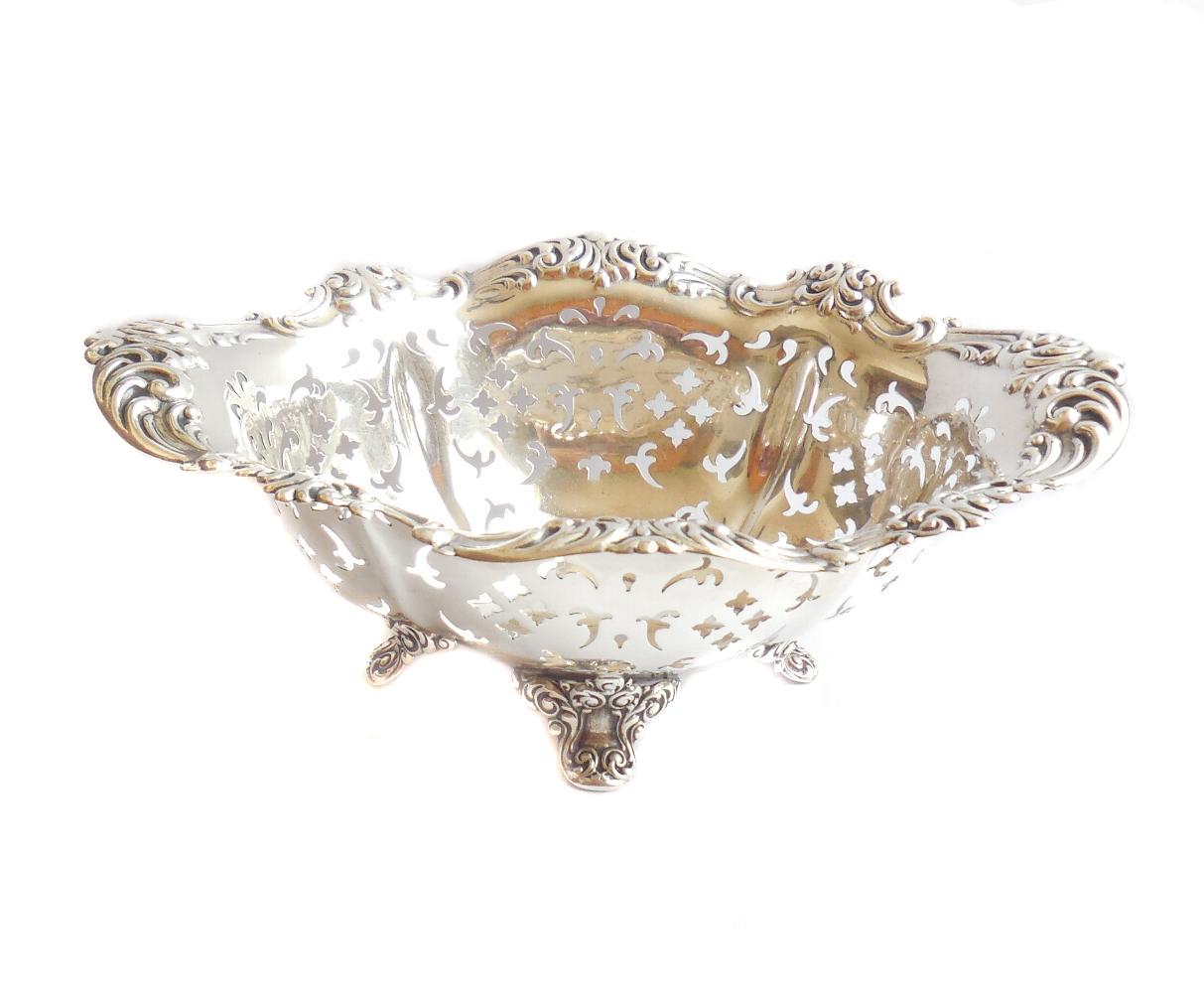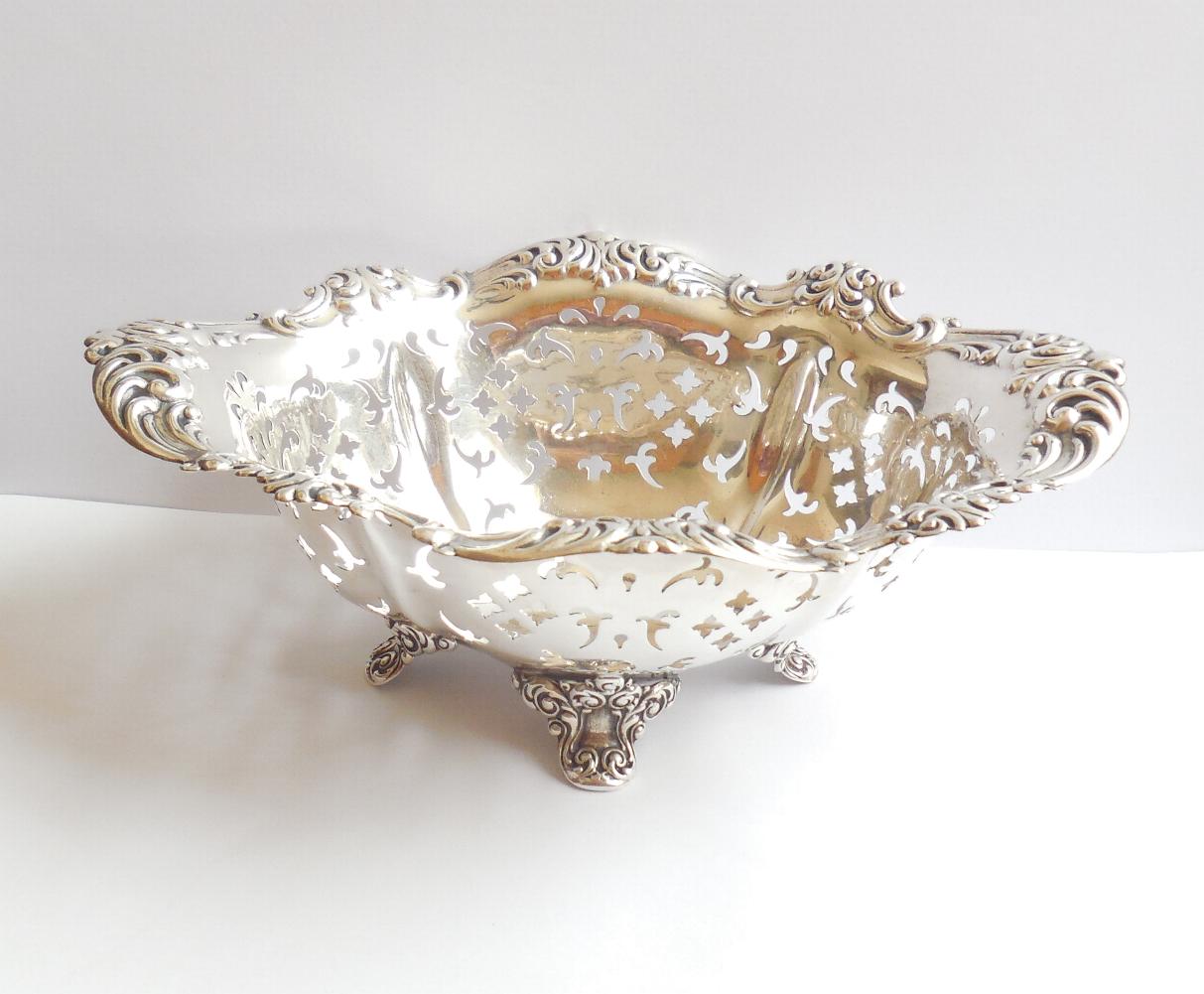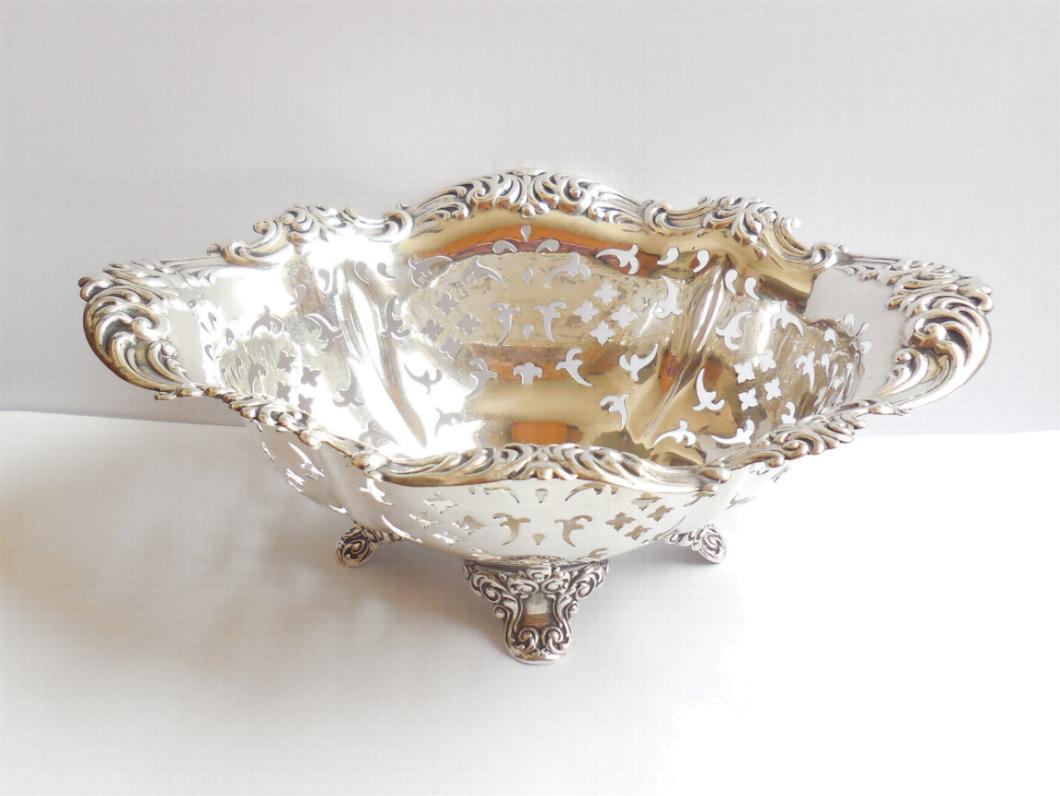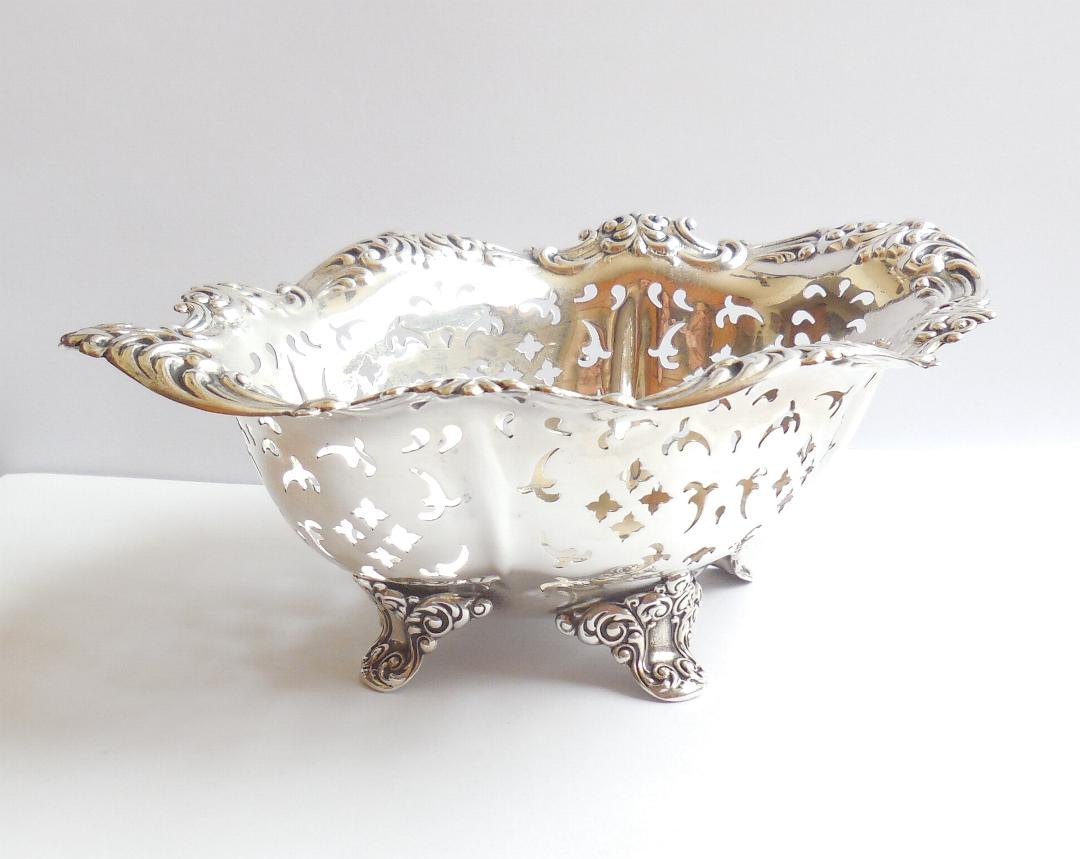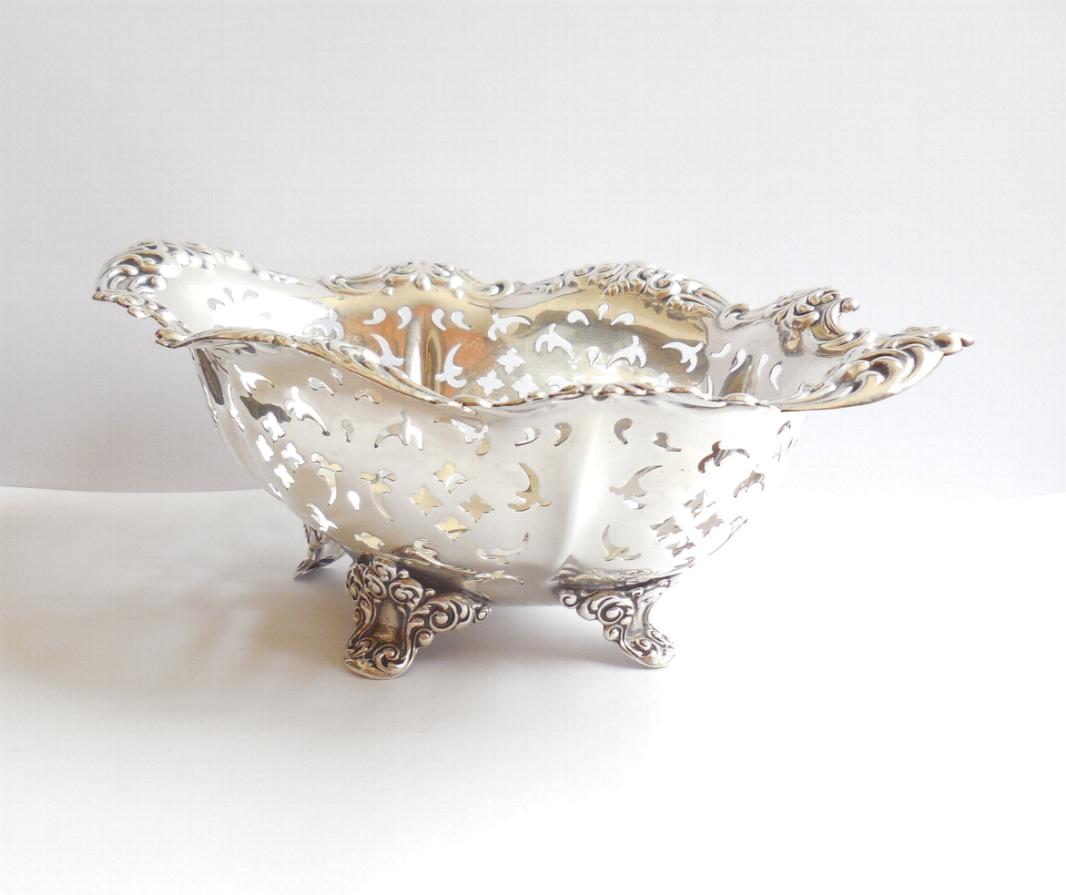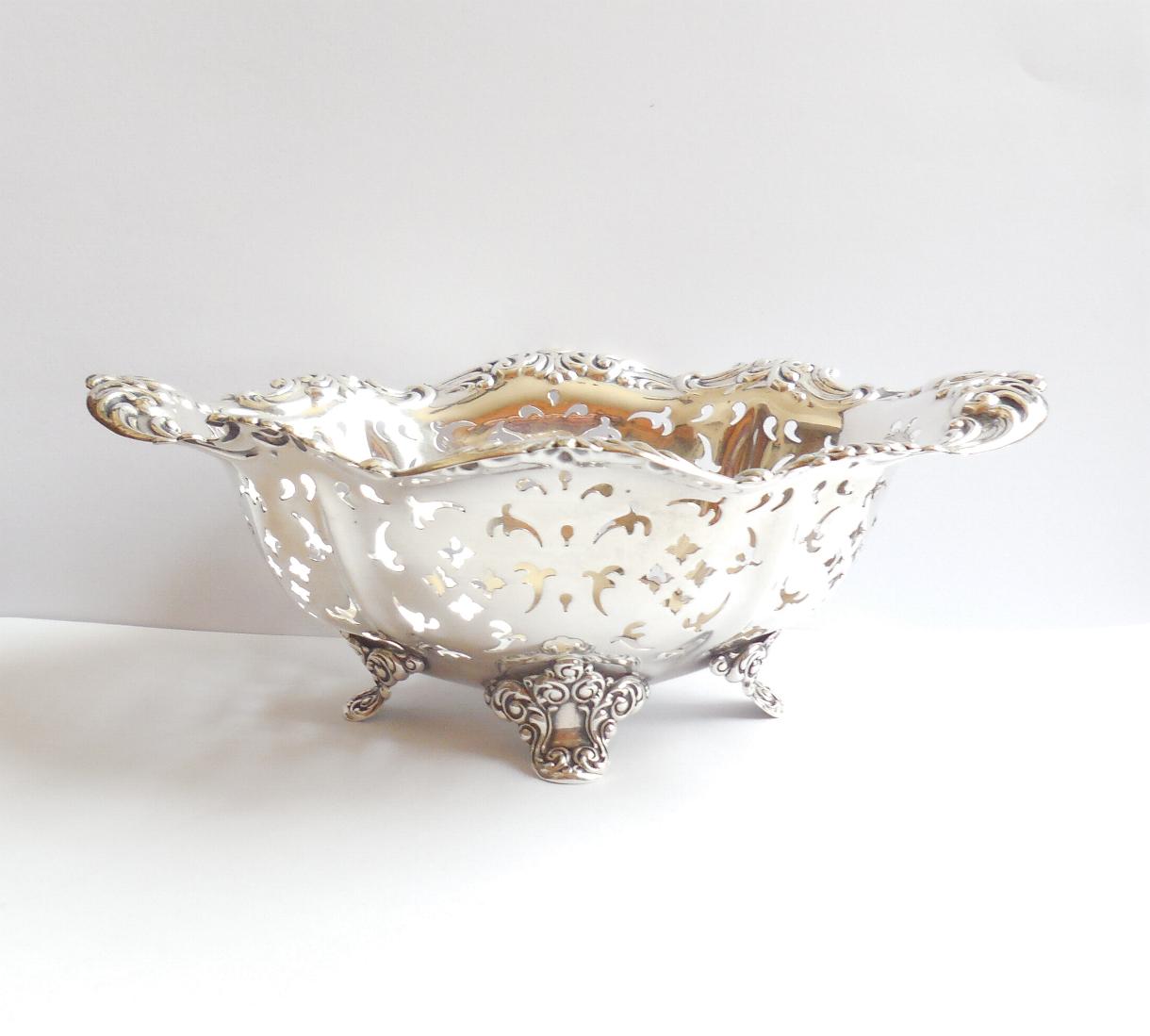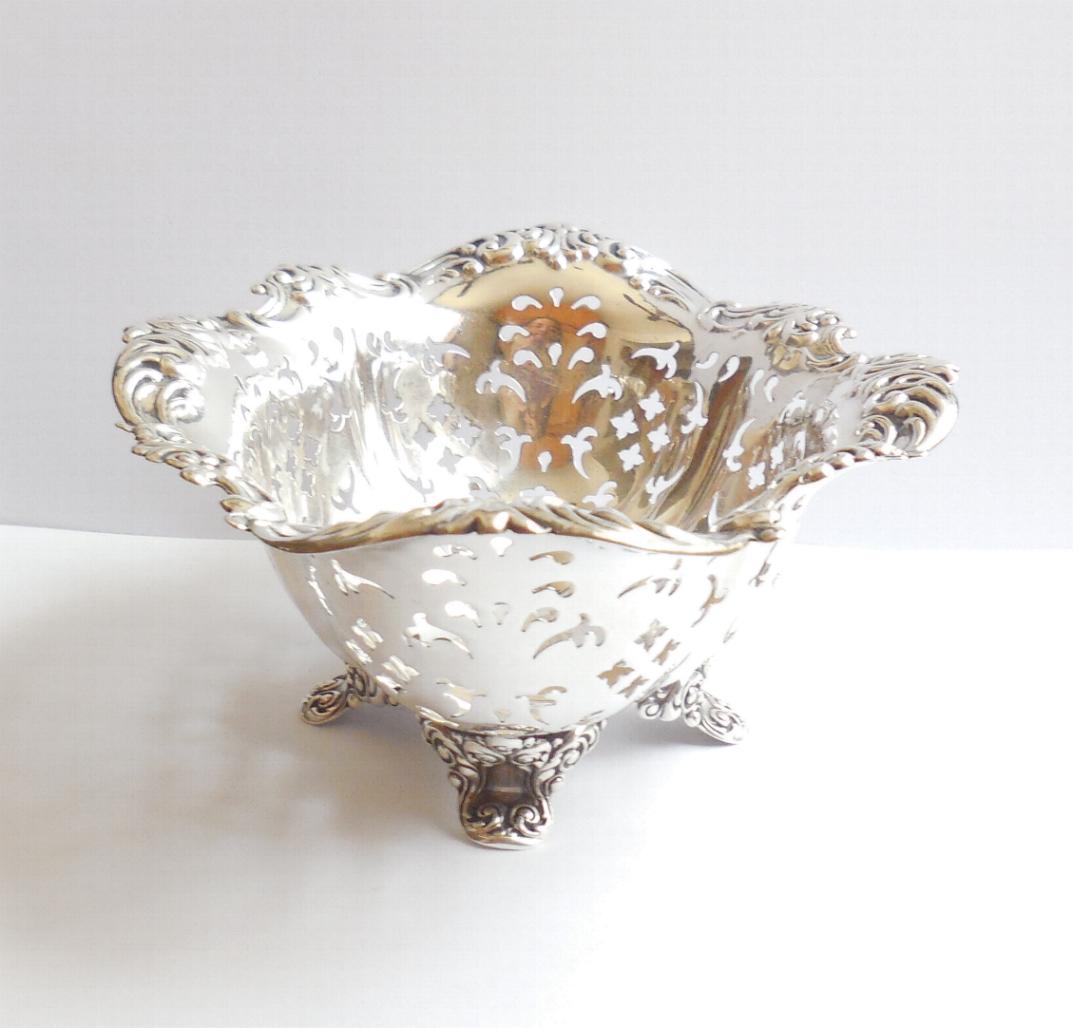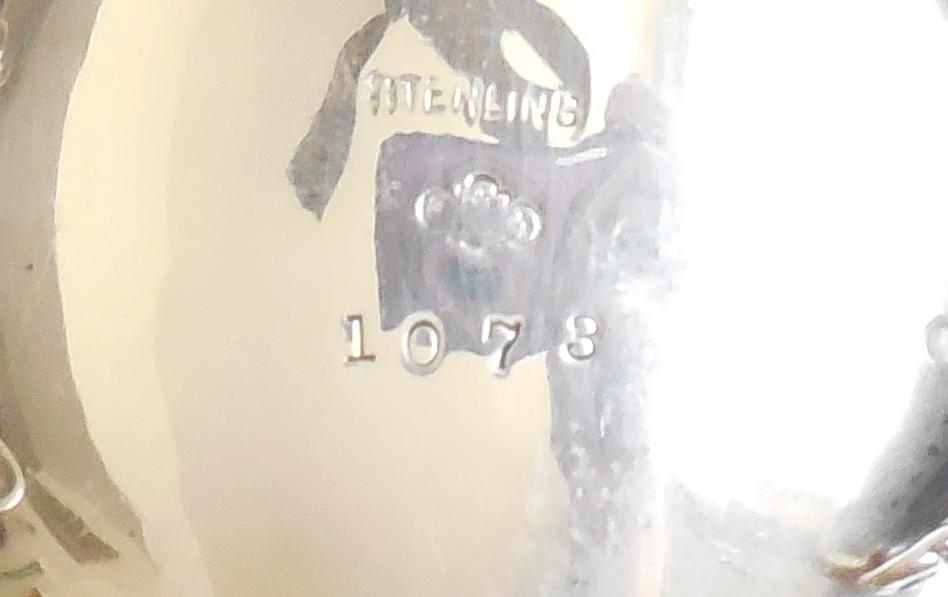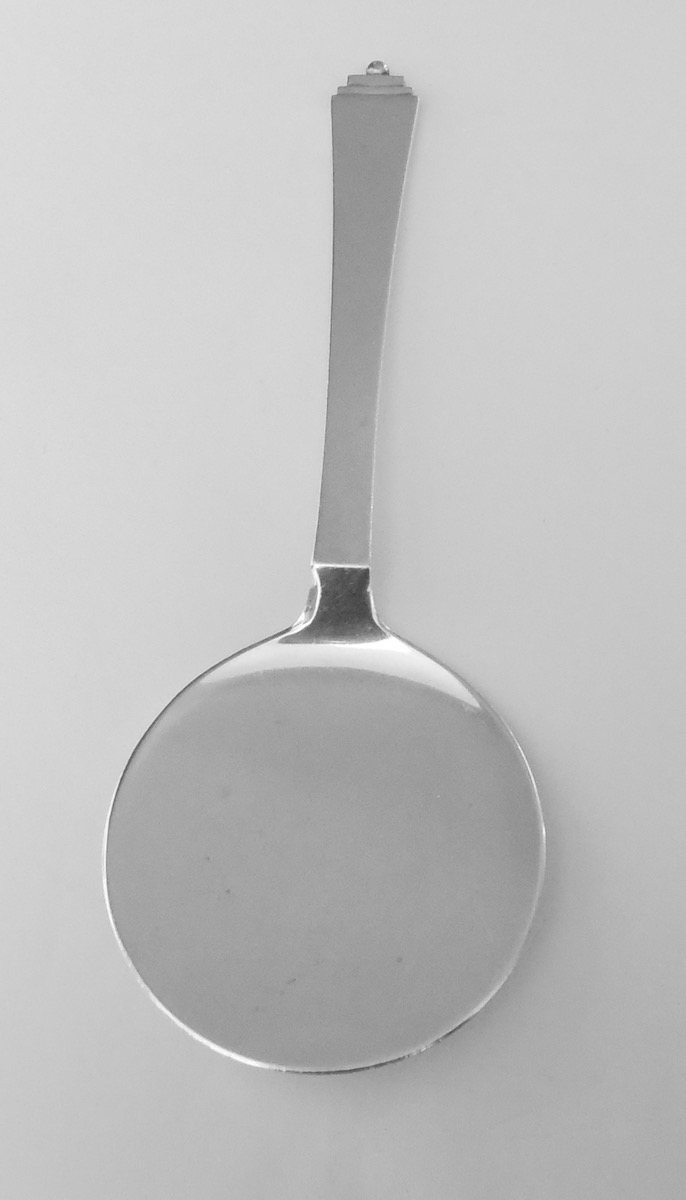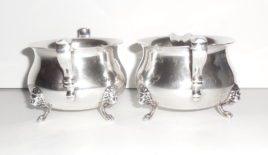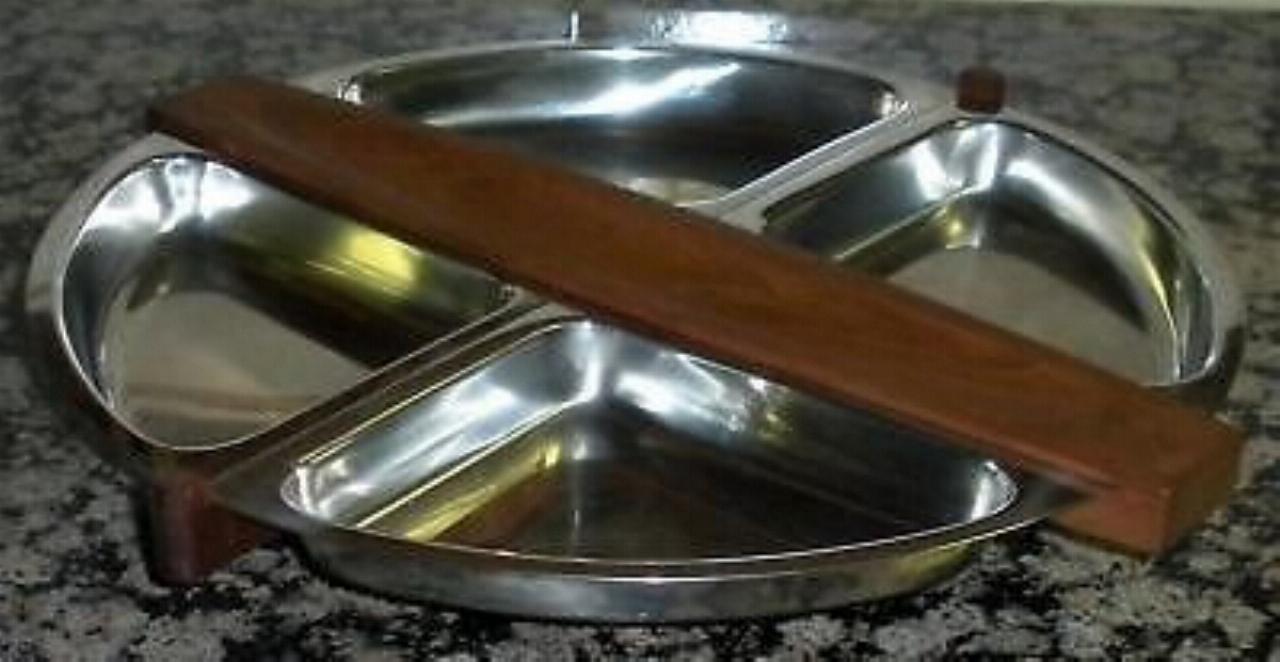Description
Antique Pierced Footed Sterling Silver Sweetmeat Bon Bon Candy Dish
This is a stunning antique Victorian pierced and footed sterling silver sweetmeat bon bon candy and nut dish. Marked sterling with maker hallmarks and guaranteed solid sterling silver. Not plated. It is beautifully decorated with fancy Rococo style repousse’ and fanciful pierced work throughout. It is also 4 footed with matching fancy rococo repousse. Size is 7 1/2″ long east to west by 5″ wide north to south by about 3″ tall. Weight is 118.5 grams. Condition is excellent, very gently used. Very minor age wear to include light surface wear and a couple of tiny dings in the bottom. No dents or deep scratches or tears, gauges, holes, etc…. Never monogrammed or inscribed. One owner intergenerational family estate item. No restoration or repair. Completely original and never altered in any way, this is a gorgeous serving dish for your formal dining table. It is exceptionally pretty and very well made.
About Victorian Silver: (www.collectorsweekly.com/silver/overview)
Holding a piece of sterling silver flatware in the palm of the hand is like holding a piece of moonlight. In fact, since ancient times, silver has been associated with the moon. Both capture the warm, full-spectrum light of the sun and reflect it back as a cool, lustrous gray. Silver knives, forks, and spoons, as well as silver tea services and serving utensils, almost seem to shimmer when set out upon a table. Yet for all its eye-catching properties, silver is comfortable with its largely utilitarian role in our domestic lives, offering a neutral backdrop for the feasts and fellowship that surround it.
Being a uniquely malleable and ductile metal—a single gram of the stuff can form a length of wire a mile long—silver was a chameleon when it came to style. Mid-18th-century rococo silver was as flamboyant as the courts of England’s George II and France’s Louis XV, with whom the style is associated. The Federal style popular during the founding years of the United States was classical and symmetrical—patriot and silversmith Paul Revere was this style’s greatest champion.
Victorian silver was heavily ornamented and the first silver to be created with the help of mass-production techniques, while Art Nouveau silver rebelled against the Industrial Revolution, focusing instead on natural motifs and flowing, asymmetrical curves. Arts and Crafts continued this aesthetic, although the ornamentation was toned down. And by the time Art Deco rose to prominence in the first half of the 20th century, silver objects followed suit.
Throughout these periods, silversmiths produced candlesticks and candelabra, hollowware ranging from bowls to goblets to tureens, teapots and tankards, snuff boxes and cigarette cases, jewelry and pocket watches, and, above all, flatware.
Whether they were using plate silver or sterling (the standard for sterling silver is 92.5 percent pure silver and 7.5 percent alloy), 19th-century artisans had a field day with the material, employing a variety of techniques to create not just flatware but hollowware and decorative objects, too.
